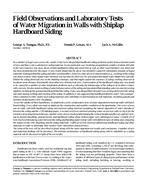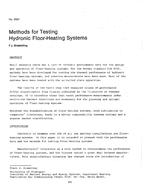Odours from idling diesel trucks at loading docks and from emergency diesel generators often lead to complaints. Improper layout of the buildings, the diesel source locations, and the building fresh air intake locations add to the situation. To evaluate odour problems and possible alternative air intake locations, wind tunnel modelling is used to predict the dispersion of the diesel exhaust within the complex airflow patterns around buildings. Standard numerical models do not work in the immediate vicinity of buildings, especially for ground-level sources The wind climate of the site and odour objection data from the literature are also used. Four case studies are presented that illustrate the analytical procedure and typical results. The open face of a building is a preferred location for diesel sources rather than within U-shaped and L-shaped building enclosures.
KEYWORDS: diesel engines, diesel fuel, testing, emergency electricity supply, odour, loading and unloading works, buildings, air pollution, indoor, air inlets, location, wind tunnels, calculating, air flow, outdoor, case studies, exhaust gases
Citation: Symposium, ASHRAE Trans. 1994, Vol.100, Part 2
Product Details
- Published:
- 1994
- File Size:
- 1 file , 950 KB
- Product Code(s):
- D-17501


